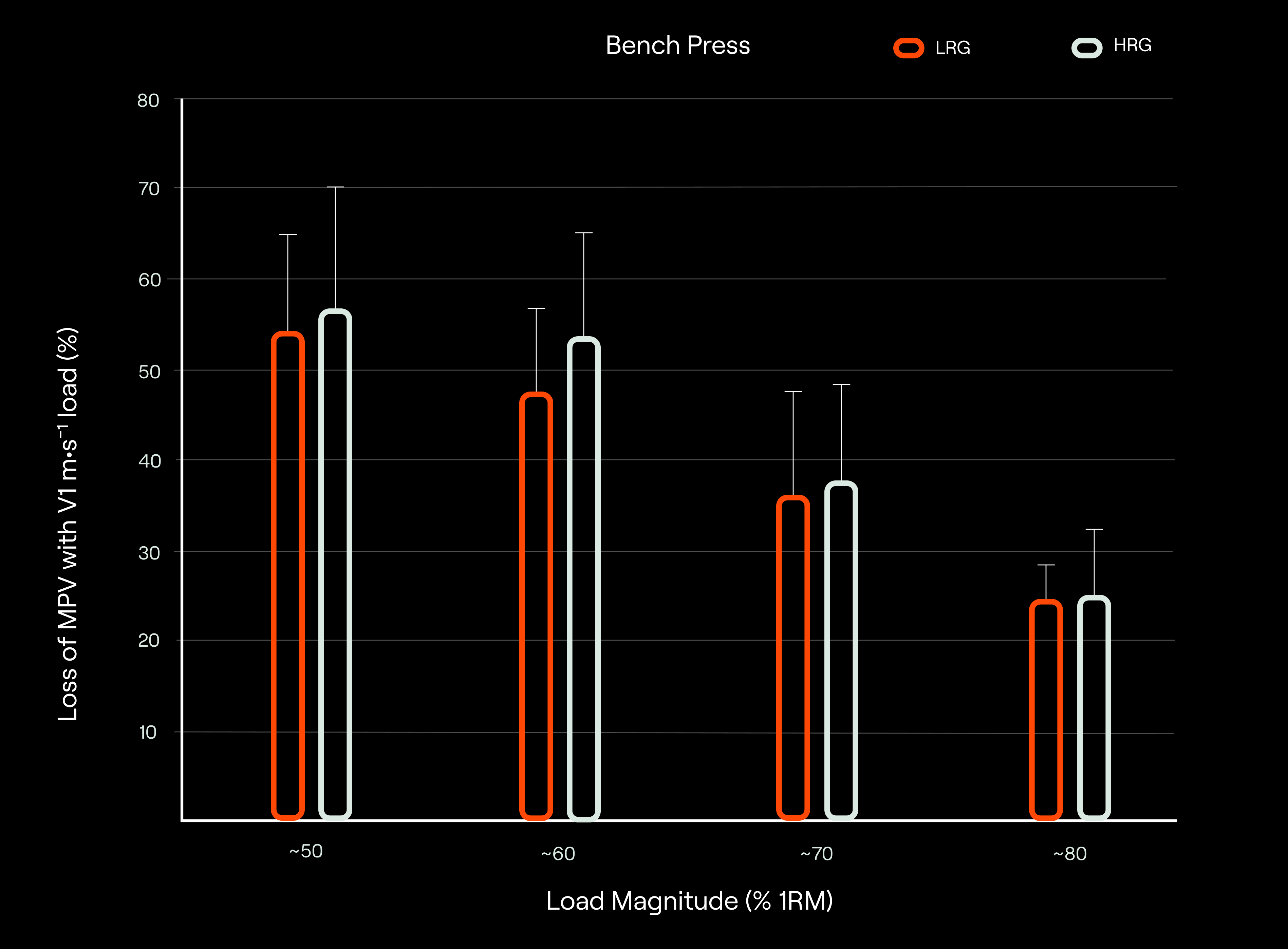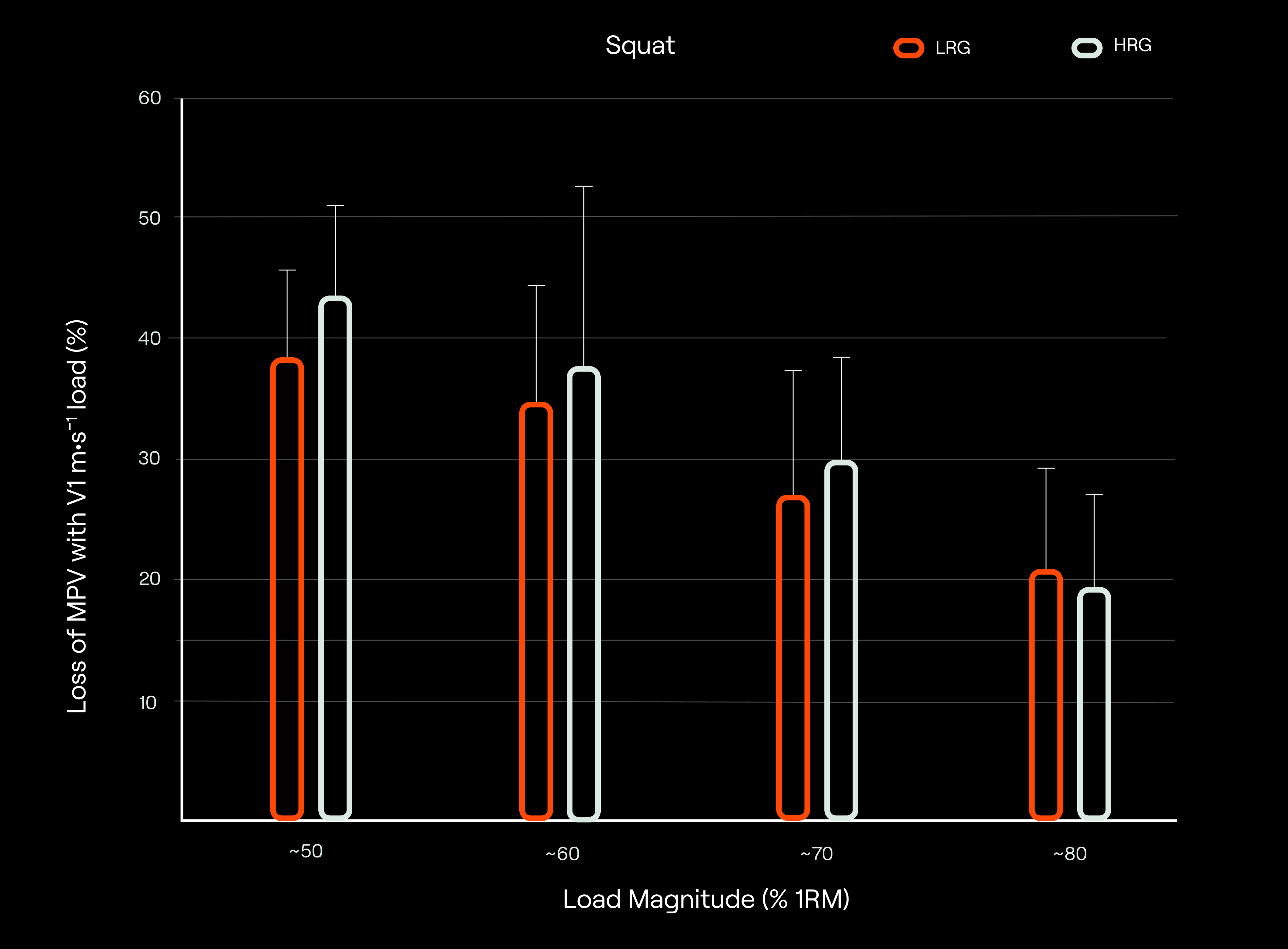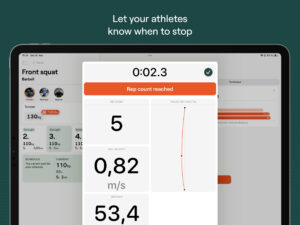Table of content
In the latest article in the series, we concluded that monitoring velocity loss (VL) during resistance training deserves its place in our coaching toolbox. This is because monitoring VL provides us with information on the degree of fatigue our athletes or clients are experiencing in a training set and because we can instruct our athletes or clients to focus on performing repetitions until they reach a predetermined VL threshold, instead of prescribing a fixed number of repetitions in a set and hoping that was a good number (or range) to prescribe that day. However, we finished that article by saying that there might be alternative, and potentially superior ways of prescribing set volume during resistance training. The obvious question now is, why would we even want the alternative? Monitoring VL provides so many benefits, and we now know that the choice of VL threshold will influence the resistance training-induced adaptations, that is, our choice of VL threshold will determine which resistance training adaptation are we going to induce and (to an extent) its magnitude [1]. Let’s dive into why we should give alternatives a chance.
A quick recap of using velocity loss during resistance training
The central premise of using VL to prescribe resistance training set volume relies on the findings of several studies where the researchers reported a very strong relationship between VL and the number of completed repetitions relative to the maximum number of repetitions possible in a set [2, 3]. In the back squat exercise, for example, if you terminated a set when your athletes or clients reached 20% VL, that would mean that they performed approximately 50% of the possible repetitions they would have been able to perform if you asked them to go to failure. If you instructed your athletes to terminate their set once they reach 40 or 50% VL, they would end their set at, or very near, muscle failure. This is why many researchers recommended that VL may also be used to regulate resistance training volume and proximity to failure with reasonable precision [2, 3]. While the use of VL thresholds presents a considerable advancement for resistance training monitoring and prescription as we already concluded several times, there are several methodological factors that should be considered when implementing them in practice. However, we will only focus on two in this article to keep things as concise as possible, and perhaps cover others in a future article.


Inter-individual variability in the amount of work completed after reaching the same velocity loss threshold
Firstly, it has been shown that there is a decent inter-individual variability in the amount of work (i.e., repetitions) people can do until reaching different VL thresholds [4, 5]. Is this a problem? Potentially, and here is why. Remember how we said that we could use VL thresholds to prescribe resistance training as an alternative to traditional methods (i.e., 1RM)? One of the reasons we said that is because of the supposedly strong relationship between the magnitude of VL someone experiences in a set and the number of repetitions performed relative to the maximum number that someone could perform if they went to failure. This can provide useful insights when prescribing set volume during resistance training. However, imagine that you’re working with two athletes John and Mark, and you give them the same relative load (e.g., 70% of 1RM) to lift in the back squat exercise and you instruct them to terminate their sets once they reach 25% VL. You do that, and later, you realize that John did 6 repetitions, whereas Mark did 9 repetitions. So, even though we entrusted our athletes to use the same relative load, in the same exercise, and terminate the set once they reach the same VL threshold, the work they completed was different. Whether this is an issue or not, we don’t know as it hasn’t been researched yet. However, we can speculate that individuals completing different numbers of repetitions using the same VL threshold will experience different degrees of neuromuscular, metabolic, and perceptual fatigue. These divergent acute responses to resistance training could also lead to divergent training adaptation over the long term. In our example from above, Mark could potentially experience more hypertrophy gains compared to John, all other things being equal. Interestingly, recent research showed that exercise choice and load can also affect the actual number of repetitions performed (and the variability thereof) until reaching different VL thresholds [1, 3]. For instance, people are expected to do more repetitions in the back squat than in the bench press, but the inter-individual variability in the number of repetitions performed is greater in the back squat than in the bench press. Additionally, if you increase the relative load, you will reduce the number of repetitions your athletes or clients can do before they reach a given VL threshold and the inter-individual variability between your athletes or clients [1]. This is just a long way of saying that how much work (i.e., repetitions) one can do until they reach a given VL threshold is confounded by the choice of exercise and the load used. Importantly, it is also affected by the individual characteristics of your athletes and clients. Therefore, prescribing the same VL threshold for your athletes or clients, all other things being equal, and assuming that they are receiving approximately the same training stimulus (or that you can predict their training response) is probably not the best idea.
The individuals’ proximity to failure remains unknown when using velocity loss to prescribe resistance training
There is one more thing that is very related to the first point we made. Even though we said that a strong relationship was found between the percentage of repetitions completed out of the maximum possible and VL reached in a set, the number of repetitions left in reserve after stopping the set remains unknown when using VL to prescribe set volume [1]. What do we mean by repetitions left in reserve and why should we care about it? The repetitions left in reserve represent the number of repetitions left undone after you stopped the set. For instance, if you pick the load that you can lift for 10 repetitions, but only do 8 repetitions, you will have 2 repetitions left in reserve. Now, why it matters to know how many repetitions you have left in reserve when you finish a training set? Well, the last repetitions of a set have been shown to contribute more to the alteration of muscle energy balance and the abrupt increase in metabolites such as ammonia [6, 7, 8]. Additionally, researchers in a recent study [9] had 24 resistance-trained males and females complete 6 sets in the free-weight bench press exercise by stopping the set at 1) muscle failure; 2) when they thought they had 1 repetition left in reserve; and 3 when they thought they had 3 repetitions left in reserve. The researchers found a linear relationship between proximity to failure and both acute neuromuscular fatigue and negative perceptual responses. This clearly demonstrates the importance of knowing how far from failure your athletes or clients are when they complete a training set. Relating this whole story to our earlier example with John and Mark, let’s again imagine that we prescribed them the same relative load in the same exercise, and asked them to terminate a set after reaching 25% VL. Previously, we said that John can do 6, and Mark can do 9 repetitions before reaching 25% VL. However, we don’t know how far from failure they are at that point. Maybe John would do 15 repetitions if they were allowed to go to failure. This would mean that John would have 9 repetitions left in reserve, but the truth is, we don’t know. VL thresholds simply don’t provide us with such information. Therefore, it would be beneficial if we could somehow use movement velocity to know the exact number of repetitions left in reserve after terminating a training set. Obviously, you could simply ask people “How many repetitions do you think you have left in reserve”, and this would be a valid approach. For now, though, we will focus on objective methods as this blog is about using movement velocity to prescribe resistance training. In a future blog post, we will compare and contrast subjective and objective resistance training prescription methods.
A quick recap of some of the issues with using velocity loss during resistance training and potential alternatives
Ok, so far, we said that using VL thresholds can leave us with some uncertainties when prescribing resistance training. Those can be summarised by asking ourselves if we prescribe the same VL threshold for two athletes, assuming the same exercise and the relative load, are we providing them with the same training stimulus? Clearly, we don’t want to have this question constantly sitting on our shoulders and bothering us when we coach, so we need a solution. Thankfully, there are two alternative approaches, both of which use movement velocity to determine 1) how much work (i.e., repetitions) one can perform in each set; and 2) how many repetitions one has left in reserve after stopping the set. Let’s see what they are about.
Using the velocity of the fastest repetition in a set to predict the maximal number of repetitions possible in that set
Very early in this article series, we mentioned some traditional resistance training prescription methods. For instance, most coaches select the load based on the 1RM of their athletes or clients while also selecting the number of sets and repetitions (arbitrarily or not) to be performed by their athletes or clients on a given day. Others, for example, prefer to prescribe the loads by first determining how many repetitions their athletes or clients can do with a given load to failure. Let’s define this as XRM. With this definition, if your athlete performs 10 repetitions with 100 kg before they reach failure, you can simply replace X with 10, and that 100 kg load is their 10RM. This way of prescribing resistance training loads is very effective as it allows coaches to control for proximity to failure. If you know your athletes’ 10RM, but you instruct them to do only 8 repetitions in a set, you will then also know that they should have approximately 2 repetitions left in reserve once they performed that set. Ok, why are we talking about this, where does the velocity come into play? Well, according to several recent studies [10, 11, 12], it seems that the fastest repetition in a set has the capacity to predict the XRM, that is, how many repetitions one can do in a set. What did the researchers do to come up with this? The researchers first recruited a good sample of participants and tested their XRM against multiple loads (e.g., from 60 to 90% of 1RM). Then, they used linear regression to draw a relationship between the fastest repetition in a set (one per load) and the XRM achieved in that same set. Once they’ve done that, they were able to predict, with very reasonable accuracy, how many repetitions a person can do after recording their fastest repetition in a set. What this means is that once the XRM-velocity relationship for an athlete is established, in practice, coaches only need to record the fastest velocity of the set (the first 1-3 repetitions are usually the fastest) and can be used to estimate in real-time the number of repetitions an athlete can do in that set. This relationship then allows us to know how much work (i.e., repetitions) a person can do with a given load, and also the number of repetitions they have left in reserve once they stop the set. Therefore, the advantages of establishing the XRM-velocity profile for our athletes or clients are obvious. And there you have it. We finally covered the first potential alternative to VL thresholds.
Using the movement velocity to gauge the proximity to failure during resistance training
Now, after covering the XRM-velocity relationship which was only recently proposed in the literature as an accurate resistance training prescription method [10, 11, 12], let’s turn our attention to the other possible alternative to VL thresholds. Approximately at the same time when the XRM-velocity relationship was first introduced in the literature, the other concept marrying the repetitions left in reserve (RIR) and movement velocity gained attention from both the coaching and scientific community. Essentially, researchers wanted to know whether there is a relationship between RIR and movement velocity. The procedures to establish this relationship are virtually the same as for the one to establish the XRM-velocity relationship. The only difference lies in what is the dependent and independent variable. While this topic is currently actively being researched and developed, based on the current evidence, it seems that every individual has a certain velocity associated with different numbers of repetitions left in reserve [13]. Put simply, instead of instructing your athletes or clients to stop their sets once they think they could do 2, 4, or 6 more (so 2, 4, and 6 RIR, for example), you could instead tell them to continue performing repetitions until they reach the velocity associated with the intended RIR. Importantly, RIR-velocity relationships are highly individual, so you shouldn’t really be generalizing one relationship to everyone, but rather try to establish a profile for every athlete or client you work with. Additionally, it is important to realize that the same person could have a different RIR-velocity profile depending on the exercise used. However, as we said before, this area of research is currently developing, so we need more data before we can give concrete recommendations on this. Nevertheless, the RIR-velocity relationship is a very promising tool for resistance training monitoring and prescription, offering attractive solutions for determining the proximity to failure of your athletes and clients in an objective manner.

Conclusion
This was probably a lot to digest, but there you have it. Hopefully, you now appreciate some limitations associated with the use of VL (in isolation) to prescribe resistance training. Should you still use them? Absolutely! The research is pretty clear on that as we’ve seen in the previous article in the series. However, if you decide to rely on VL thresholds only, you should aim to quantify the amount of work (i.e., repetitions) your athletes or clients are doing when they reach a predetermined VL so that you can have a better idea of the actual volume your athletes or clients complete in every set and session. Additionally, it would be wise to introduce some rating of perceived exertion (RPE) scales when using VL to prescribe resistance training sets. One such scale is an RPE-based RIR scale [14]. You could show this scale to your athletes after each training set, and after they provide you with a rating on that scale you should have an idea of how many repetitions they think they could have done if they wanted to reach failure in that set. This would be the estimate of the proximity to failure at which they finished that set. By monitoring the amount of work your athletes or clients complete before reaching a predetermined VL as well as their RPE scores upon the completion of the set, you should have everything you need to make comparisons between athletes, monitor acute training responses, and adjust training (and recovery) decisions accordingly. You could also embrace XRM- and RIR-velocity relationships and make profiles for your athletes or clients individually. This would require some testing and simple modelling, but it would take a lot of extra work from you down the line. We will aim to dive deeper into those two relationships, compare and contrast them, and show how to establish them yourself in one of the next articles.
References
- Jukic, I., Castilla, A. P., Ramos, A. G., Van Hooren, B., McGuigan, M. R., & Helms, E. R. (2023). The acute and chronic effects of implementing velocity loss thresholds during resistance training: a systematic review, meta-analysis, and critical evaluation of the literature. Sports Medicine, 53(1), 177-214.
- González-Badillo, J. J., Yañez-García, J. M., Mora-Custodio, R., & Rodríguez-Rosell, D. (2017). Velocity loss as a variable for monitoring resistance exercise. International Journal of Sports Medicine, 38(03), 217-225.
- Rodríguez-Rosell, D., Yáñez-García, J. M., Sánchez-Medina, L., Mora-Custodio, R., & González-Badillo, J. J. (2020). Relationship between velocity loss and repetitions in reserve in the bench press and back squat exercises. The Journal of Strength & Conditioning Research, 34(9), 2537-2547.
- Jukic, I., Prnjak, K., McGuigan, M. R., & Helms, E. R. (2022). One velocity loss threshold does not fit all: Consideration of sex, training status, history, and personality traits when monitoring and controlling fatigue during resistance training. https://www.researchsquare.com/article/rs-2082449/v1
- Pearson, M., García-Ramos, A., Morrison, M., Ramirez-Lopez, C., Dalton-Barron, N., & Weakley, J. (2020). Velocity loss thresholds reliably control kinetic and kinematic outputs during free weight resistance training. International Journal of Environmental Research and Public Health, 17(18), 6509.
- Gorostiaga, E. M., Navarro-Amézqueta, I., Calbet, J. A., Sánchez-Medina, L., Cusso, R., Guerrero, M., … & Izquierdo, M. (2014). Blood ammonia and lactate as markers of muscle metabolites during leg press exercise. The Journal of Strength & Conditioning Research, 28(10), 2775-2785.
- Gorostiaga, E. M., Navarro-Amézqueta, I., González-Izal, M., Malanda, A., Granados, C., Ibáñez, J., … & Izquierdo, M. (2012). Blood lactate and sEMG at different knee angles during fatiguing leg press exercise. European Journal of Applied Physiology, 112, 1349-1358.
- Sanchez-Medina, L., & González-Badillo, J. J. (2011). Velocity loss as an indicator of neuromuscular fatigue during resistance training. Medicine and Science in Sports and Exercise, 43(9), 1725-1734.
- Refalo, M. C., Helms, E. R., Hamilton, D. L., & Fyfe, J. J. (2023). Influence of resistance training proximity-to-failure, determined by repetitions-in-reserve, on neuromuscular fatigue in resistance-trained males and females. Sports Medicine-Open, 9(1), 10.
- García-Ramos, A., Torrejón, A., Feriche, B., Morales-Artacho, A. J., Pérez-Castilla, A., Padial, P., & Haff, G. G. (2018). Prediction of the maximum number of repetitions and repetitions in reserve from barbell velocity. International Journal of Sports Physiology and Performance, 13(3), 353-359.
- Miras-Moreno, S., Pérez-Castilla, A., & García-Ramos, A. (2022). Lifting velocity as a predictor of the maximum number of repetitions that can be performed to failure during the prone bench pull exercise. International Journal of Sports Physiology and Performance, 17(8), 1213-1221.
- Jukic, I., Helms, E. R., & McGuigan, M. R. (2023). The fastest repetition in a set predicts the number of repetitions completed to failure during resistance training: The impact of individual characteristics. Physiology & Behavior, 265, 114158.
- Morán-Navarro, R., Martínez-Cava, A., Sánchez-Medina, L., Mora-Rodríguez, R., González-Badillo, J. J., & Pallarés, J. G. (2019). Movement velocity as a measure of level of effort during resistance exercise. The Journal of Strength & Conditioning Research, 33(6), 1496-1504.
- Zourdos, M. C., Klemp, A., Dolan, C., Quiles, J. M., Schau, K. A., Jo, E., … & Blanco, R. (2016). Novel resistance training–specific rating of perceived exertion scale measuring repetitions in reserve. The Journal of Strength & Conditioning Research, 30(1), 267-275.



